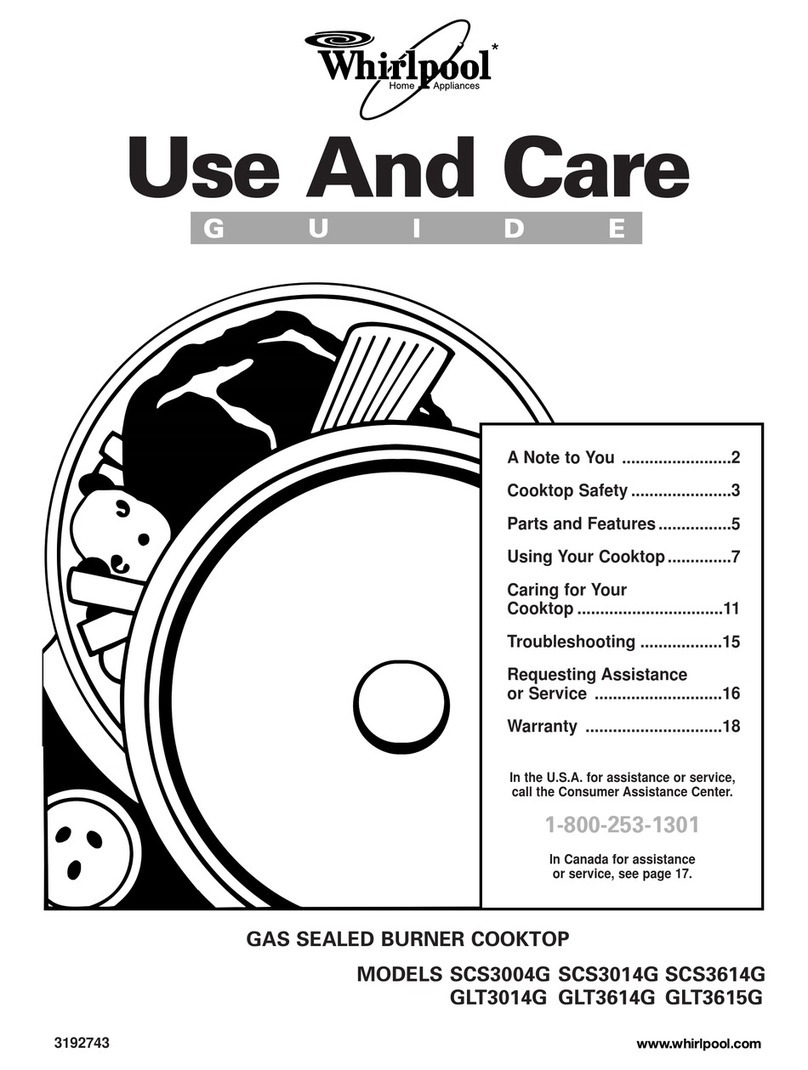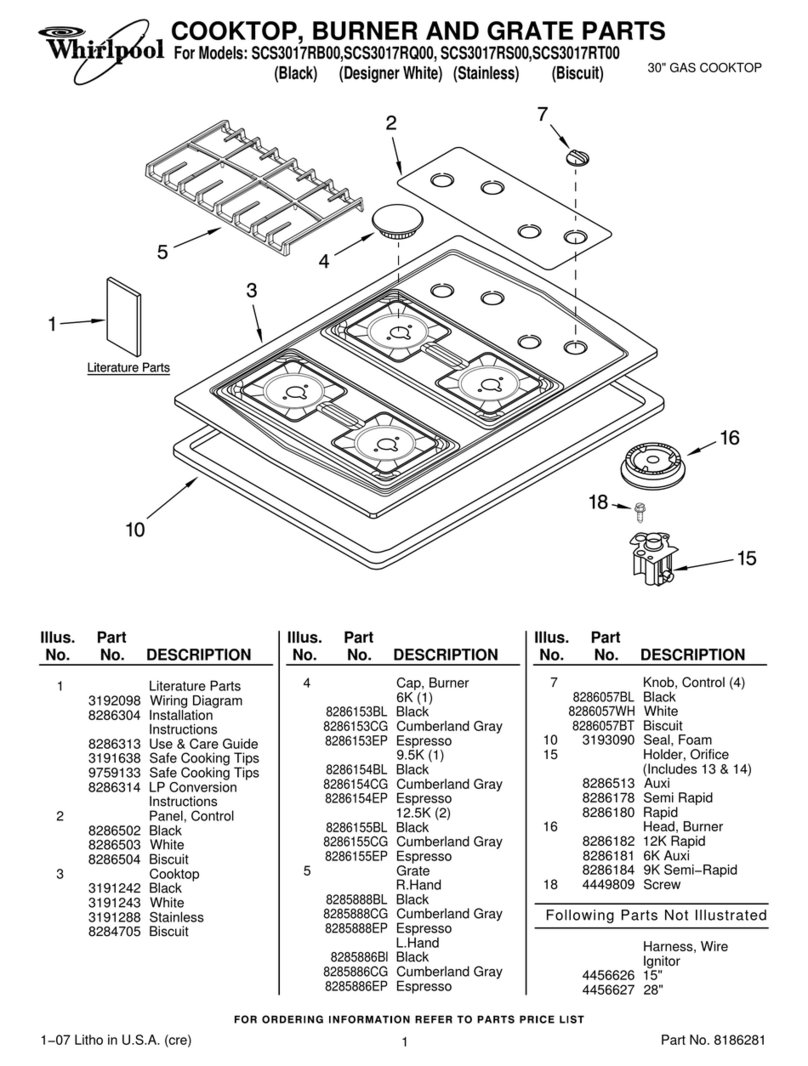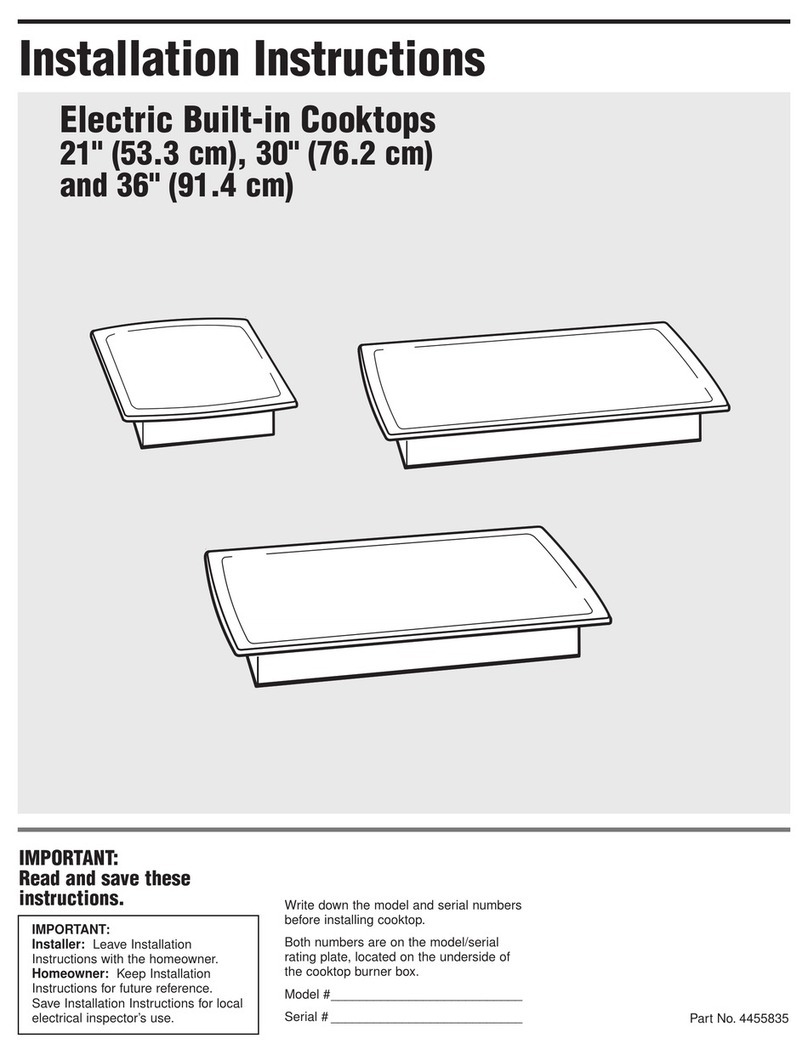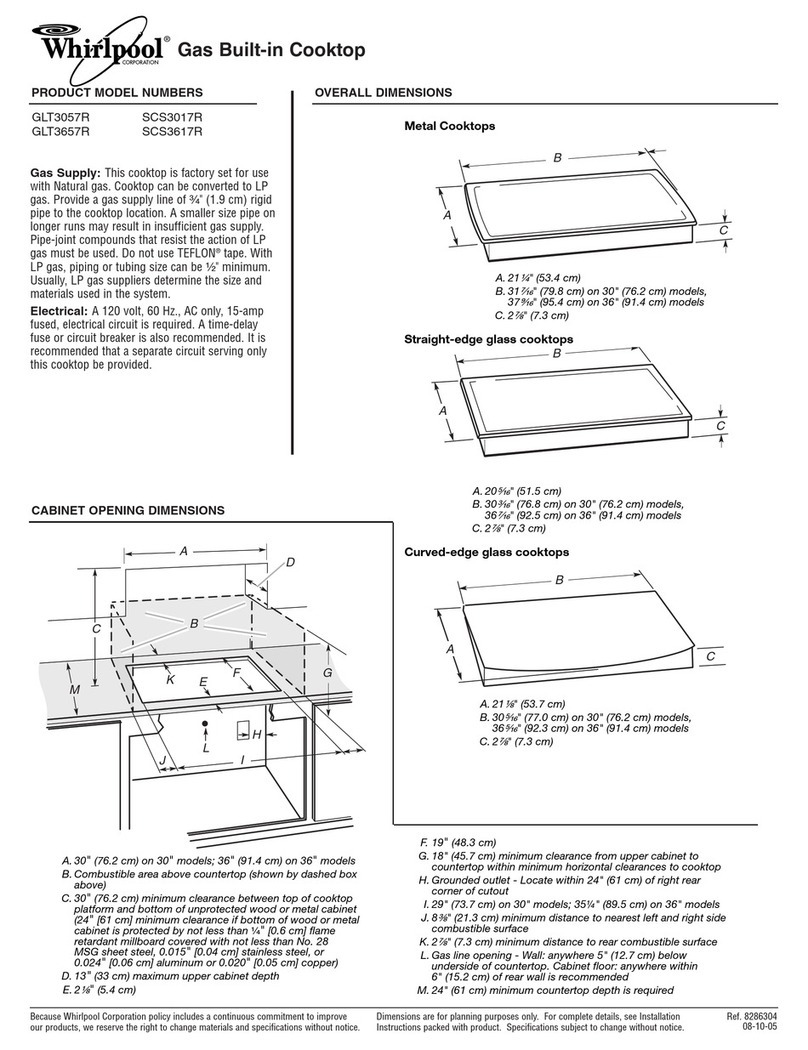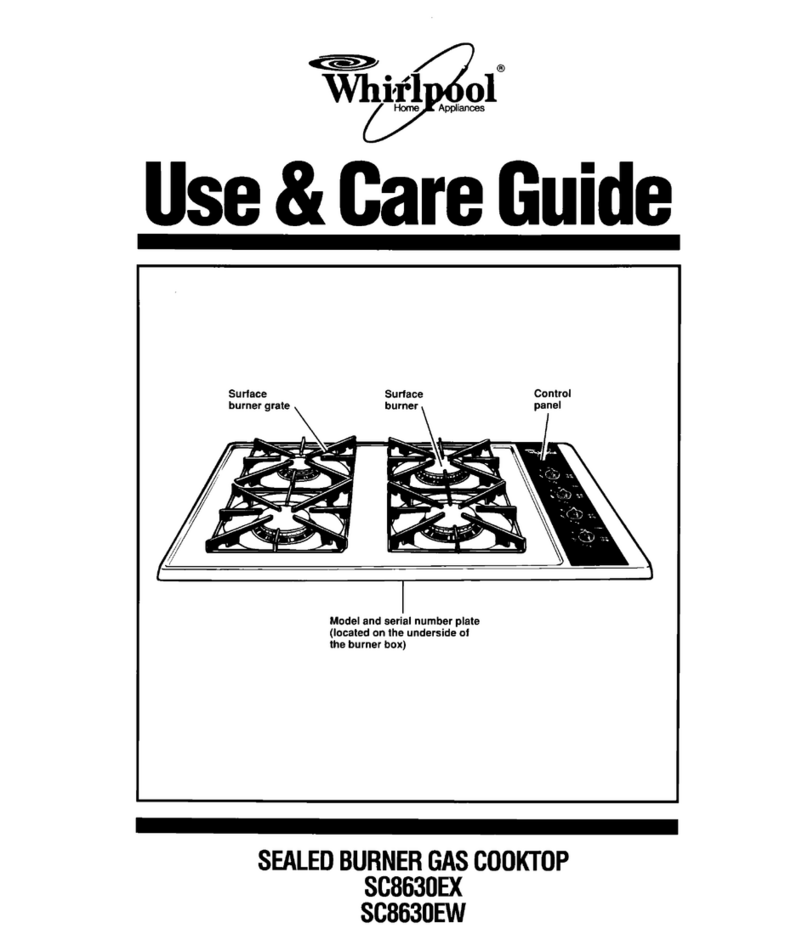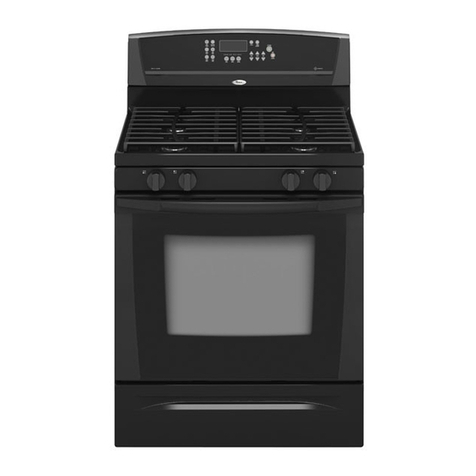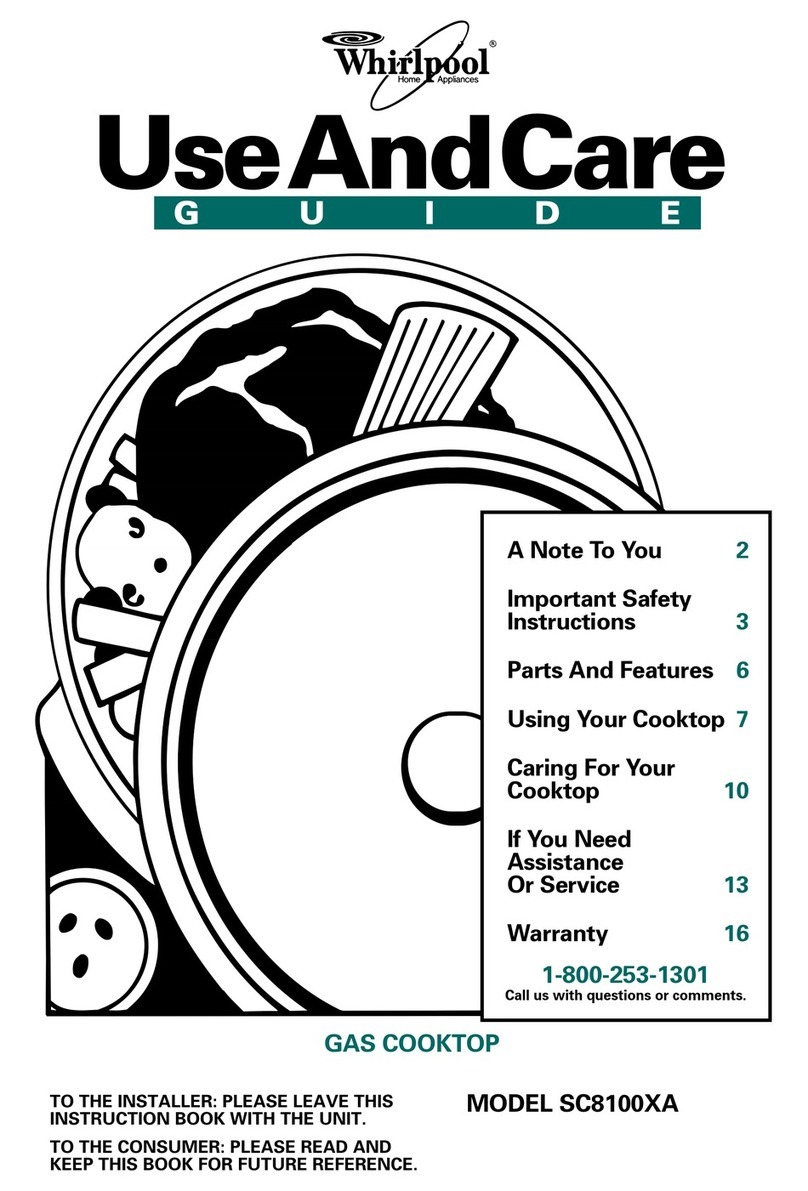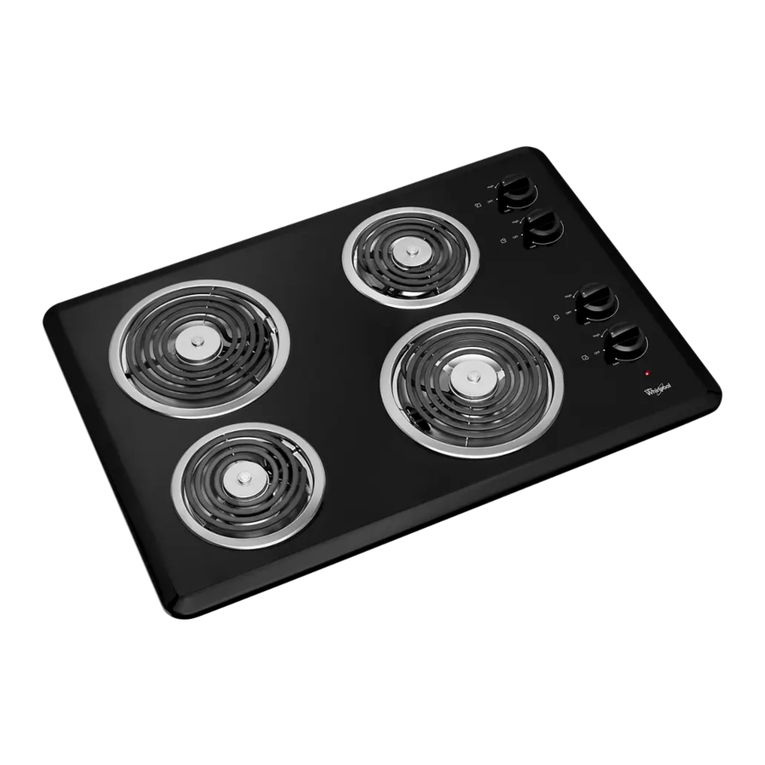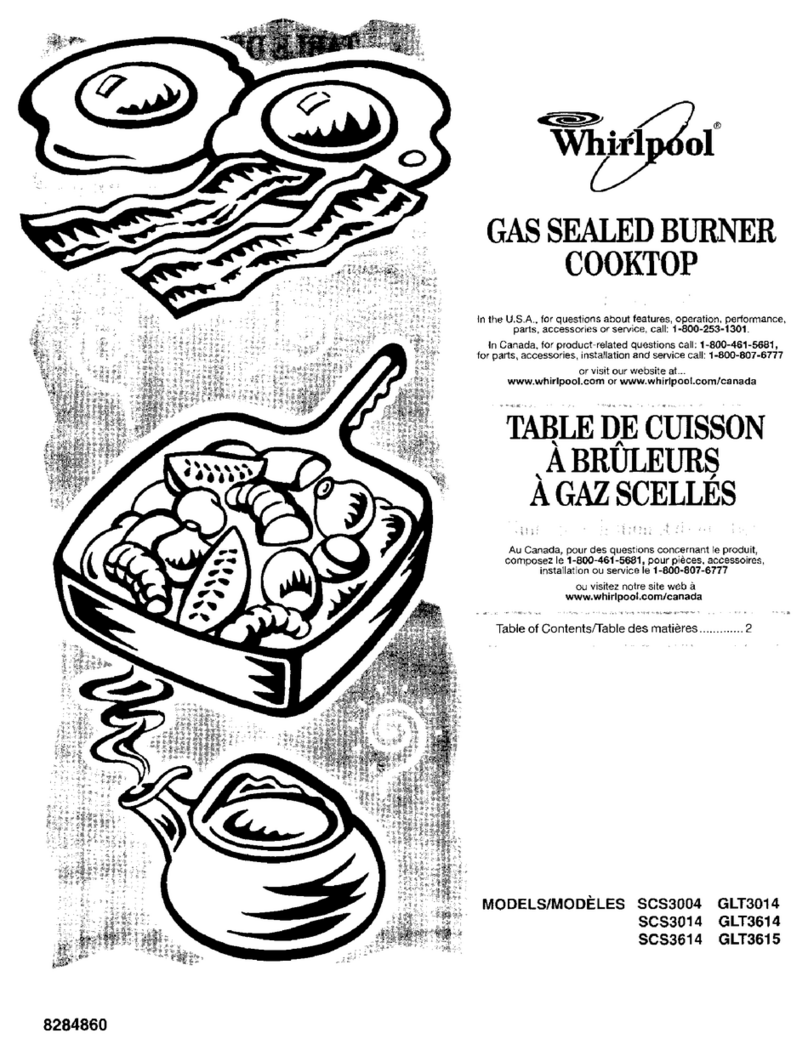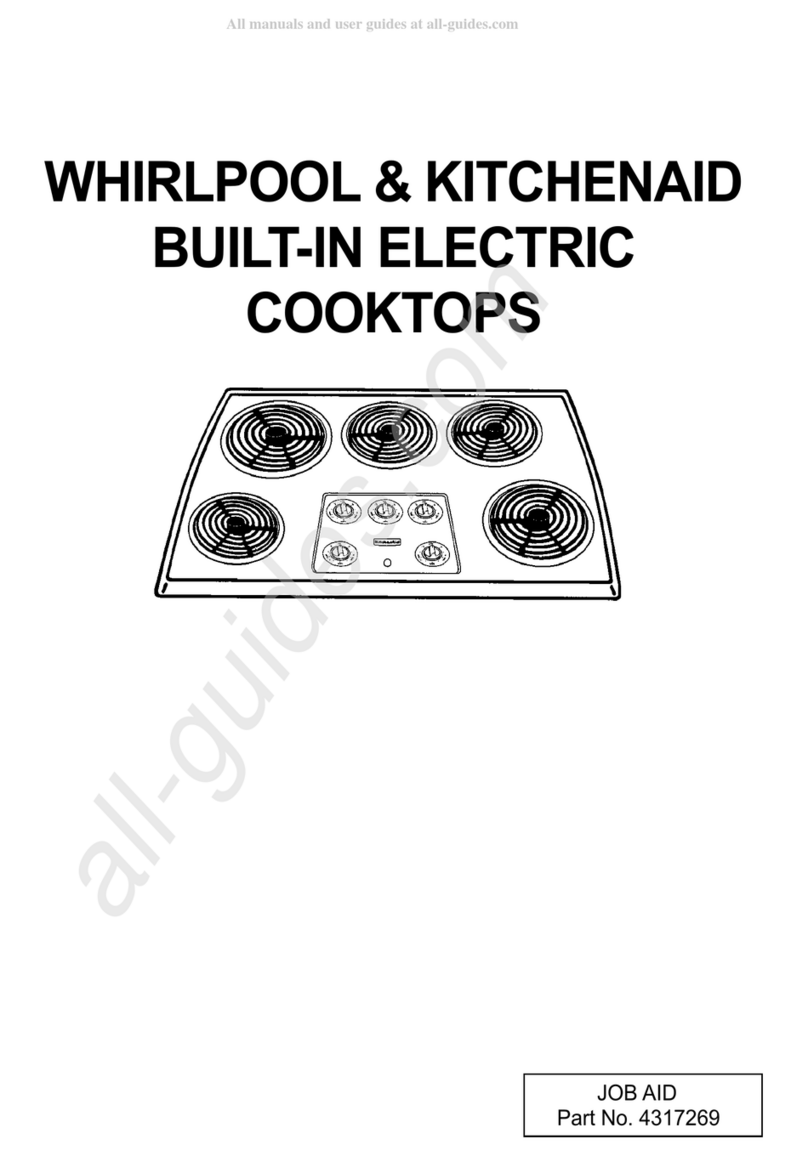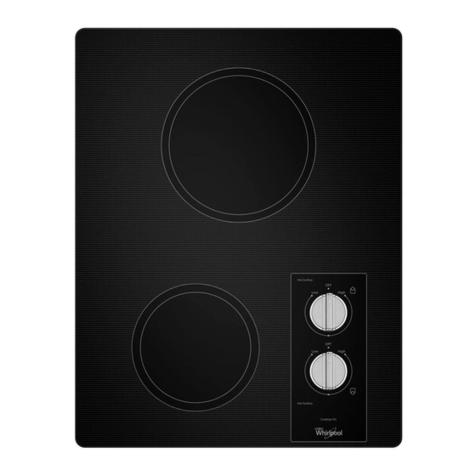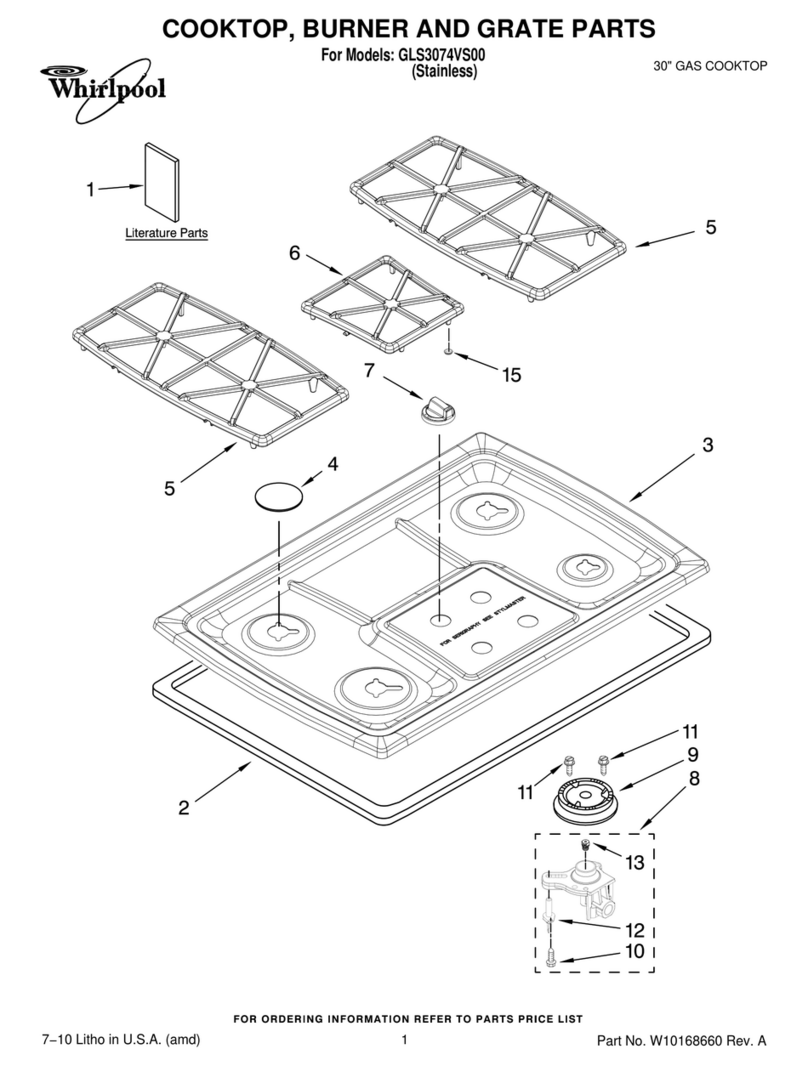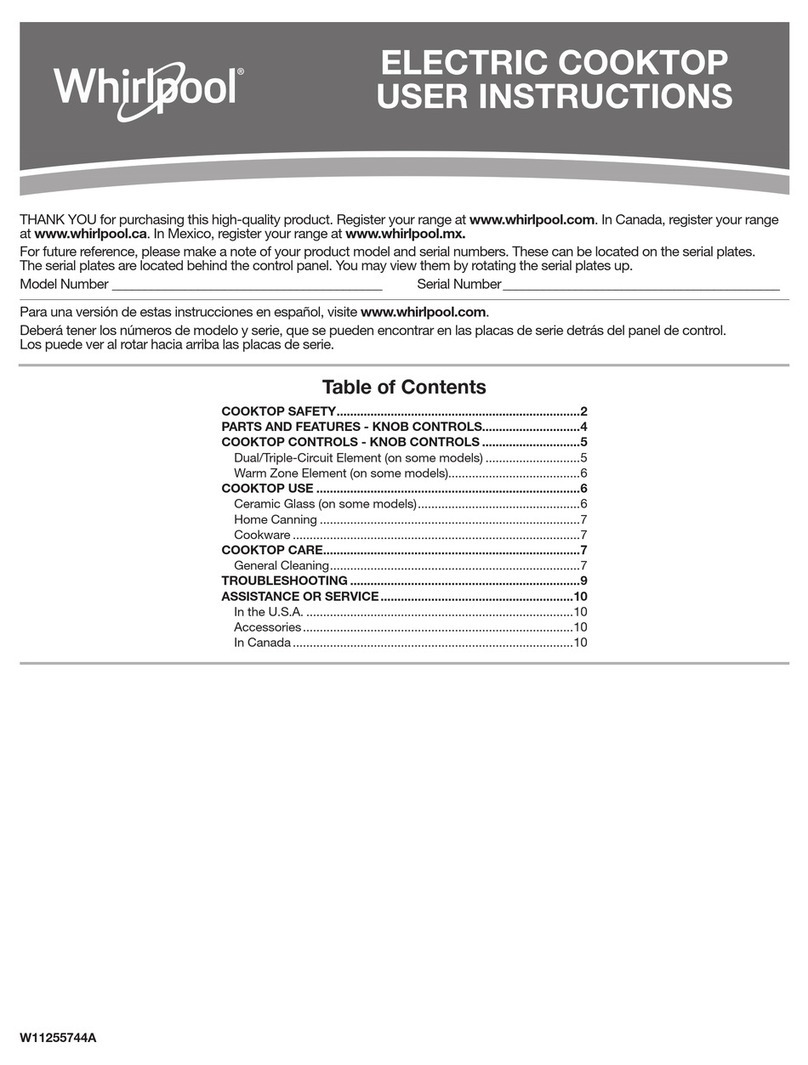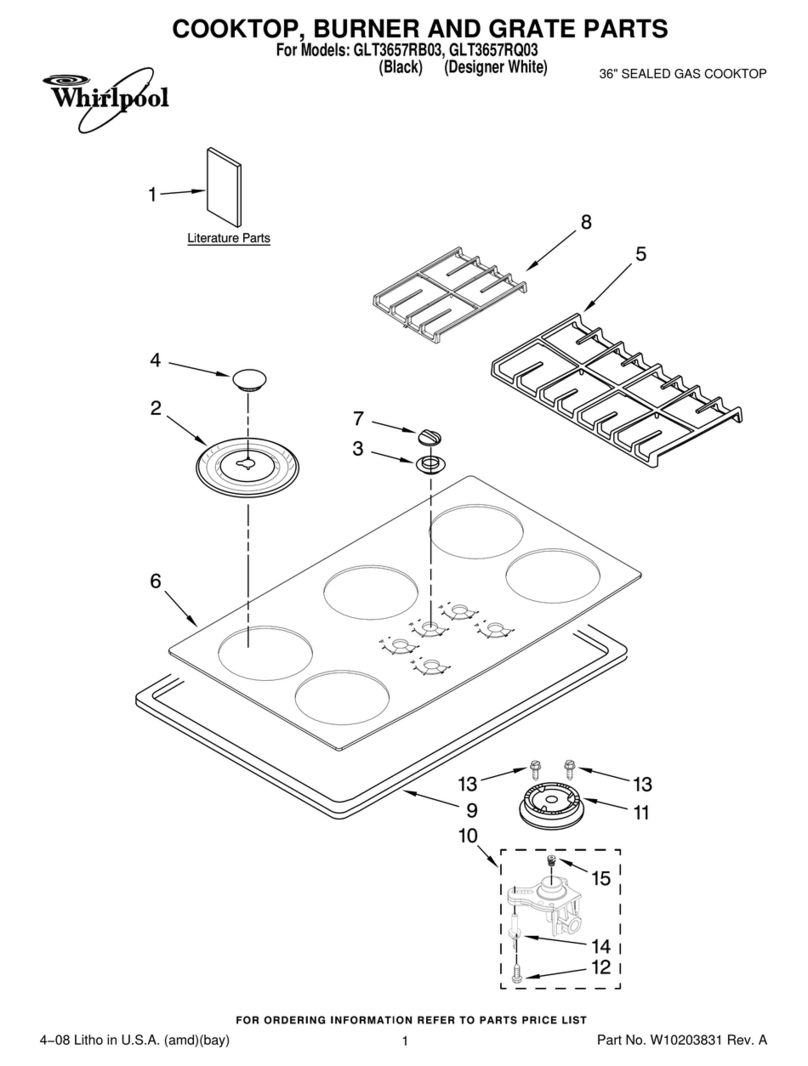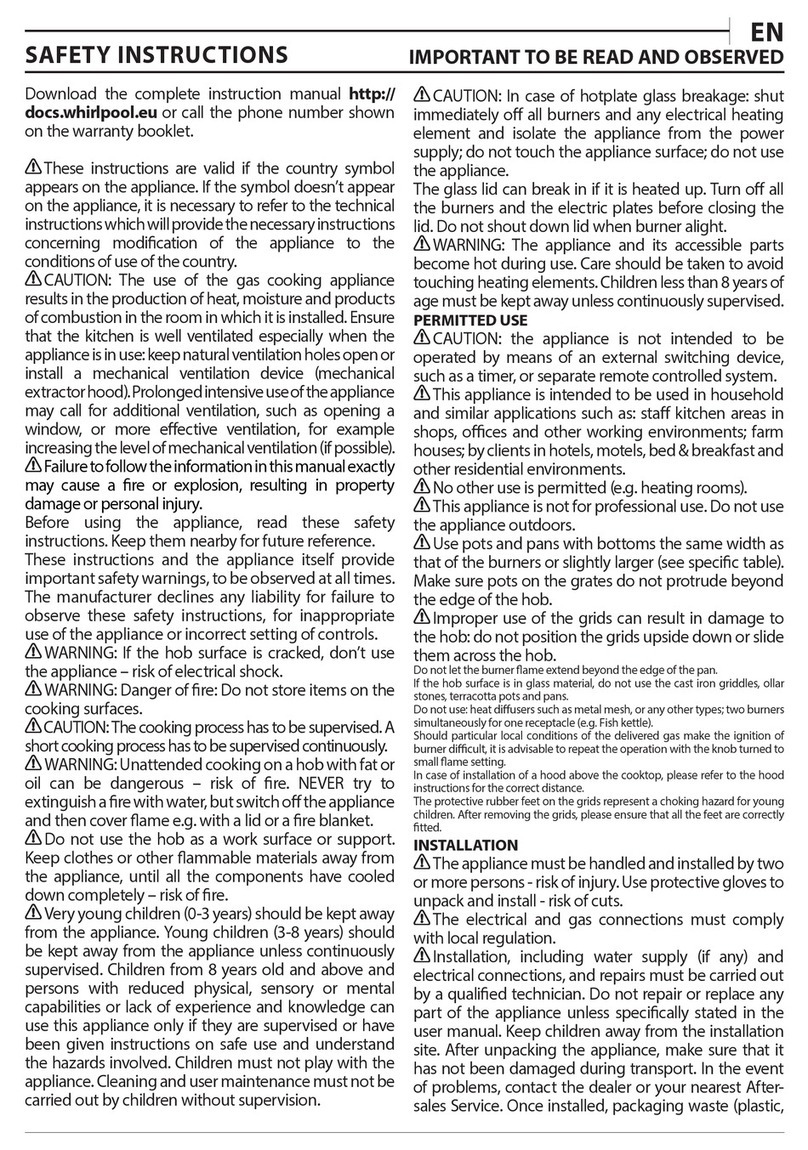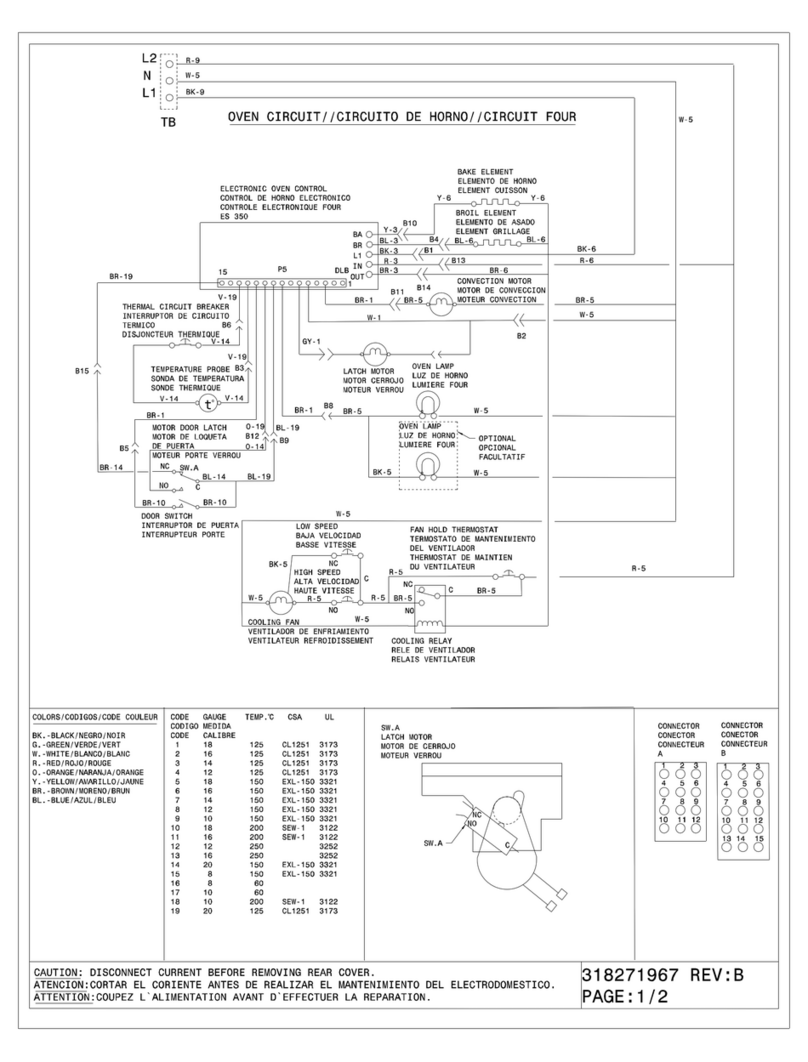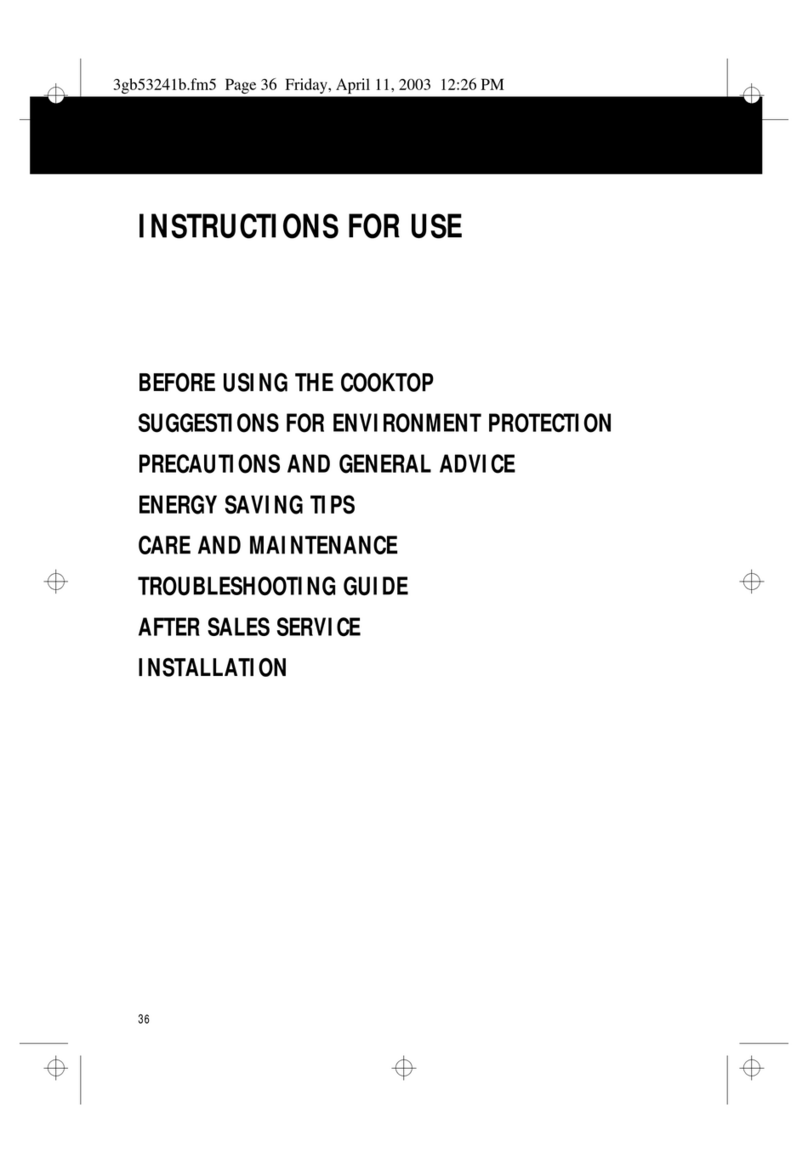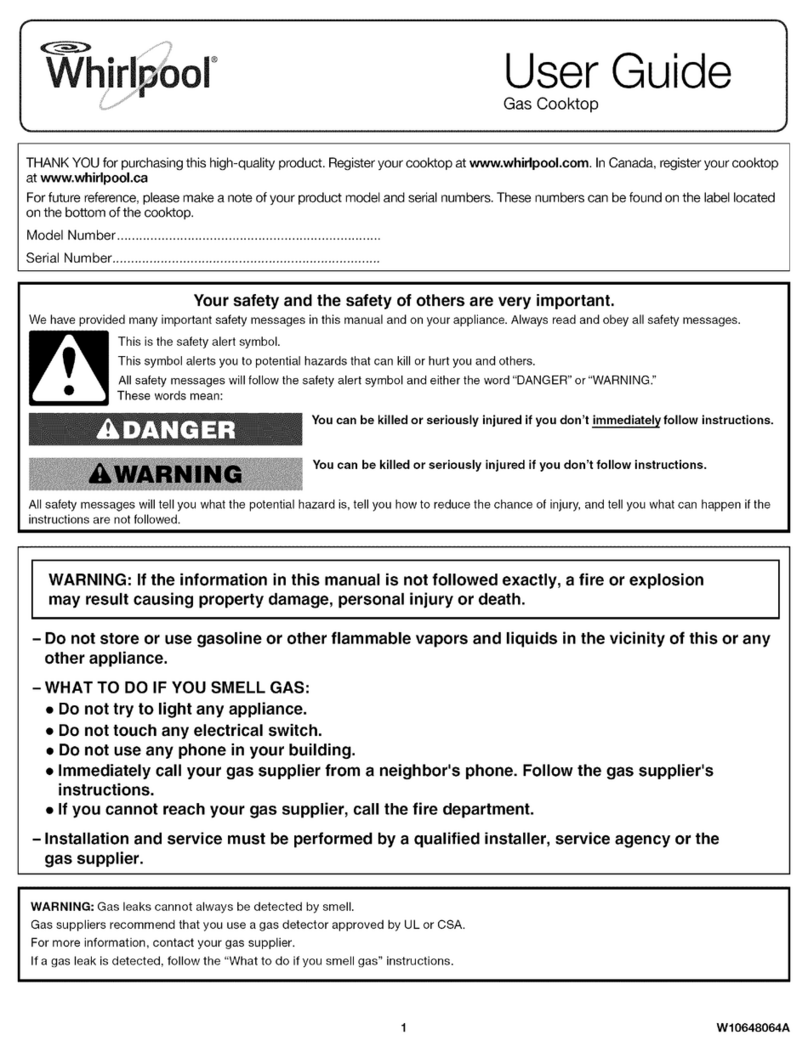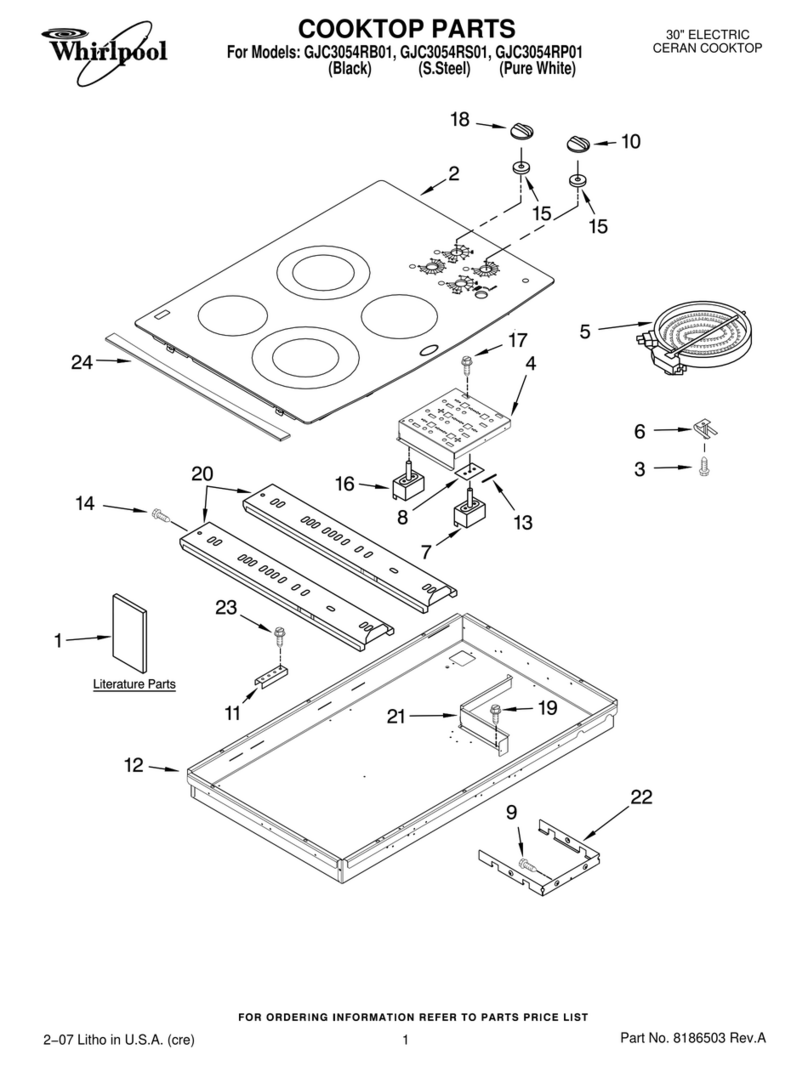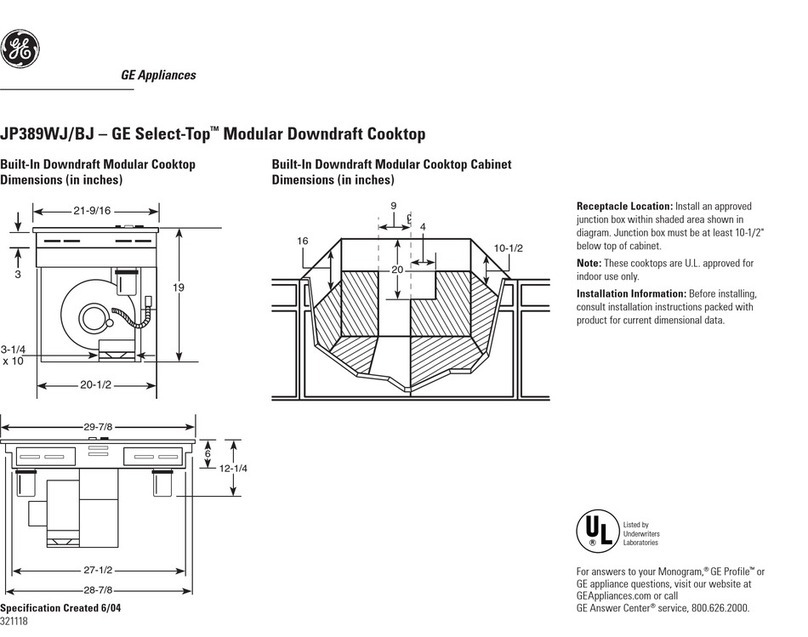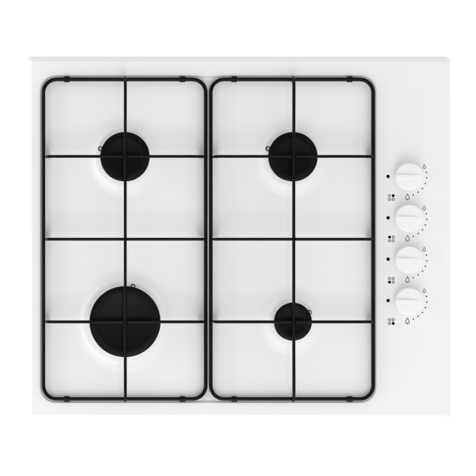Fire Hazard
The venting system MUST end outdoors.
Do Not end the ductwork in an attic, wall,
ceiling or other enclosed space.
Do Not use 4" laundry-type wall caps.
Do Not use plastic-type duct.
Do Not block the flow of ventilation air.
Failure to follow these instructions could result
in a fire.
Duct materials needed for installation is not
supplied.
Before making cutouts, make sure there is proper
clearance within the wall or floor for the exhaust
duct.
Do Not cut a joist or stud unless absolutely
necessary. If a joist or stud must be cut, then a
supporting frame must be constructed.
Determine which venting method to use. See
“Venting methods,” Page 2.
Next, determine the equivalent duct length using
chart on Page 3. This cooktop is equipped with a
dual range blower. The equivalent duct length (not
actual) determines whether blower is set at the
“Low” or “High” range. The blower is set at the
“Low” range setting at the factory.
The blower housing must be rotated or swiveled to
the proper angle needed for your installation. The
blower can be swiveled 90°. The blower maybe
rotated horizontally or vertically. Reach through the
ventilation chamber to loosen, but Do Not remove,
the nuts around blower inlet to adjust the blower.
This downdraft cooktop is rated at 60 feet of
straight duct.
• If duct length is 10 feet (3 m) or less, 5" diameter
round ductwork may be used.
• If duct length is more than 10 feet (3 m), use 6"
diameter round or 3-1/4" x 10" rectangular duct.
Thermal breaks: In areas of extreme cold weather, it
may be necessary to provide a short length of
nonmetallic duct as close to the wall as possible to
prevent thermal conduction along the metal duct.
For altitudes above 4,500 ft (1,350 m), reduce
recommended duct run by 20%.
For the most efficient and
quietest operation:
Use 26-gauge minimum galvanized or 25-gauge
minimum aluminum metal duct. Poor-quality
pipe fittings can reduce air flow. (Note: Local
codes may require a heavier-gauge material.)
Flexible metal duct is Not recommended.
Do Not exhaust more than one downdraft
cooktop into a single duct system.
The length of duct and number of elbows
should be kept to a minimum to provide
efficient performance.
The size of the duct should be uniform.
Use no more than three 90° elbows.
Do Not install two elbows together.
Make sure there is a minimum of 18" (45.7 cm)
of straight duct between the elbows if more
than one elbow is used. (Elbows too close
together cause excess turbulence that reduces
airflow.)
Do Not use a 5" elbow in a 6" or 3-1/4" x 10"
system. Instead, use a 5" to 6" transition
followed by a 6" elbow, or a 5" to 3-1/4" x 10"
elbow transition.
Do Not reduce back to 5" system after using 6"
or 3-1/4" x 10" fittings.
Avoid forming handmade crimps. Handmade
crimps may restrict airflow.
Use the recommended duct caps for proper
performance. If an alternate wall or roof cap is
used, be certain cap size is not reduced and that
it has a backdraft damper.
Use duct tape to seal all joints in the duct
system.
Use caulking to seal exterior wall or roof
opening around the cap.
The cooktop may be vented through the rear wall or
floor. Common venting methods and the types of
materials needed are shown.
Make sure there is proper clearance within the wall or
floor for exhaust duct before making cutouts.
